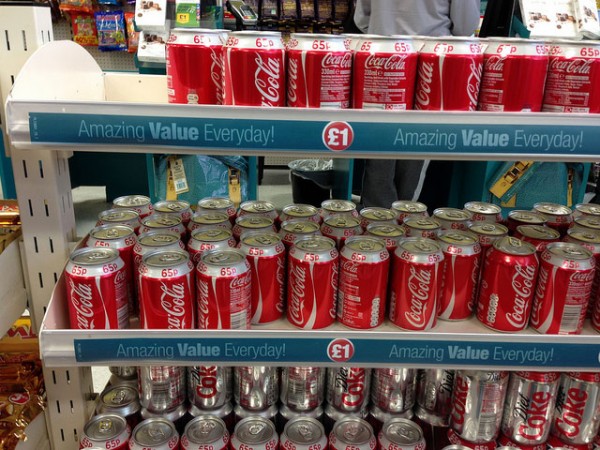This theory suggests that consumer spending patterns are heavily influenced by the way goods are presented. Changing the way goods are sold/presented to a consumer can strongly influence what is bought.
Choice architecture is a method to retain consumer sovereignty (the right to choose) but nudging consumers to make certain choices.
The idea of choice architecture originated in a book Nudge: Improving Decisions about Health, Wealth, and Happiness. (2008) by Richard Thaler and Cass Sunstein.
Choice architecture is associated with an idea of liberal paternalism – the combination of respecting liberty/freedom of choice – but encouraging certain actions.
How choice architecture works
When consumers purchase goods, they are often influenced by factors such as:
- Default choice – Consumers buy the ‘easiest’ option. Often this is the option that they have used to buying. The default choice involves minimising costs of choosing and deciding what to buy.
- Short-term benefit. Consumers are more likely to be myopic – and choose based on short-term influences.
Choice architecture can make use of these factors to encourage consumption of certain goods.
- Presenting the desired choices as the default option
- Reducing other choices.
- Special offers and encouragement for choosing a particular option.
- Advertising and campaigns to influence behaviour
- Changing how the good is packaged.
Examples of choice architecture
- Opt-in/ Opt-Out. If people have to opt-in, many stick with the default option of not opting in. But, if you have to opt-out, many more will take the scheme. For example, if donor cars are opt-in, take-up rates may be low. But, if donor cards become opt-out, then take-up rates have been shown to increases. A similar example is with company pensions. Making them opt-out significantly increases take-up rates.
Choice architecture and demerit goods
- Demerit goods – are considered damaging to the consumer and therefore governments seek to reduce demand
- In the UK, packaging of cigarettes has been changed to display consequences of throat cancer on the package. Recently cigarettes are hidden from view – meaning consumers have to make an extra effort to buy the good.
- Highlighting health costs. In the UK many firms now highlight how much sugar/fat is in a product, with the % of daily recommended amounts. If consumers see a packet of doughnuts contains 40% of the daily recommended intake of sugar, this may discourage them from consuming.
Choice architecture and merit goods
- Merit goods are considered beneficial and consumers often under-estimate these benefits. For example, vaccination is very beneficial if everyone takes it, but people may not want to bother. The government can introduce mass vaccinations in schools and only if parents object, can someone avoid it.
- With regard to education. The government could and try and make it very easy and cheap for students to stay on and continue higher education rather than leave at the age of 16.
- With regard to the purchase of cars, the government and insurance companies can encourage consumers to buy safer, more fuel-efficient cars. If you buy a powerful, high petrol consumption car – you are likely to pay higher tax and insurance rates.
Choice architecture and commercial selling
- Firms will use many elements of choice architecture to encourage sales. For example, if you walk around a supermarket, there will be special offers and grouped items, encouraging consumers to buy goods that they may not otherwise buy. In fact, supermarkets earn money from suppliers paying money to have their goods in the best places. The location within the supermarket can make a huge difference to sales.
Evaluation of choice architecture
- Consumers may react differently to the presentation of choices and options.
- Some consumers may resent the government influence and stick to their preferred choice.
- Choice architecture may be insufficient and other policies, such as sugar tax used to reduce demand.
- By nudging consumers into making certain purchases, it may reduce their ability to make decisions for themselves.
- It depends on the quality of information about goods. For example, in the 1980s, it was fashionable to say that fat in diets was damaging, but now evidence is less conclusive, and some say that low-fat foods can be unhealthy if they encourage excess sugar consumption.
Related

